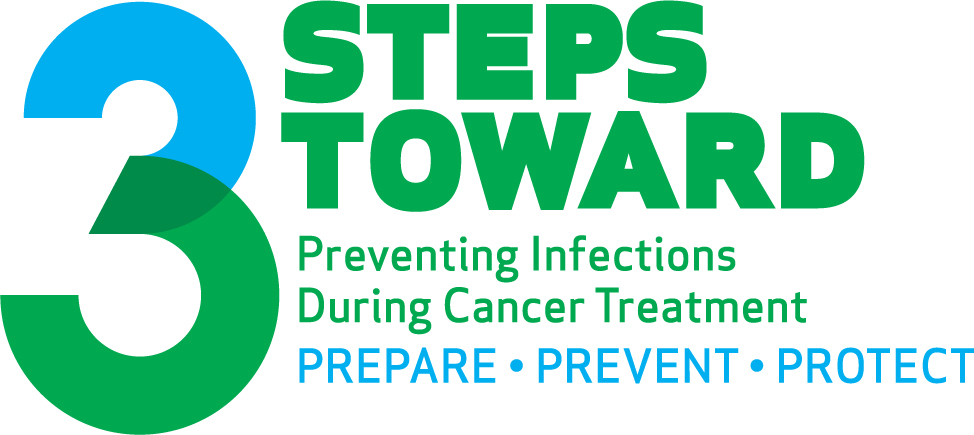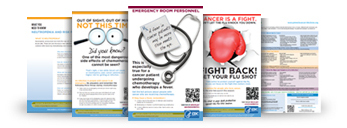Autoimmune Disease
Arises from an overactive immune response of the body against substances and tissues normally present in the body. In other words, the body attacks its own organs. The immune system mistakes some part of the body as a foreign and attacks it. Some examples of autoimmune disease include rheumatoid arthritis, multiple sclerosis and lupus.
Bacteria
Very small microorganisms. Some types of bacteria enter the body from the air, water, soil, or food, and can cause infections and disease. Bacteria are the most common causes of infections in people with cancer. Common bacterial infections include pneumonia, bronchitis, and ear infections.
Blood Cell Count
A test to check the number of red blood cells, white blood cells, and platelets in a sample of blood. Also called complete blood count (CBC).
Bone Marrow
The soft, sponge-like tissue in the center of most bones. Bone marrow makes all kinds of blood cells: white blood cells, red blood cells, and platelets.
Bone Marrow Transplant
Bone marrow is a spongy tissue found inside bones. Stem cells live in the bone marrow and are used to make new blood cells. For a bone marrow transplant, stem cells are taken from the bone marrow. The stem cells can be taken from the patient or from a donor. The cells are put back into the body after the patient has had chemotherapy and/or radiation therapy where they help the patient to make new blood cells. Bone marrow transplants are often used to treat blood cancers.
Bronchitis
Lung disease that harms the lungs and makes it harder to breath. Chronic bronchitis is a form of chronic obstructive pulmonary disease (COPD) caused by chronic inflammation of the bronchi, the airways leading from the trachea to the lungs.
Cancer Stage
A description of how much cancer there is in the body and its location. Stage is usually described using the numbers one to four. Cancer staging may vary based on cancer type. Staging is used in almost all cancers except for most forms of leukemia
Catheter
A tiny plastic tube. Doctors use these to put fluids into your body or as a way for fluids to leave your body.
Central Venous Access Device (CVAD)
A broad term that includes many types of catheters (a tiny plastic tube) that are inserted into and positioned within a vein in the body to deliver therapies (e.g. chemotherapy) to the bloodstream.
Chemotherapy
The use of special medicine(s) to treat cancer by killing cancer cells. A person on chemotherapy may take one drug or a combination of drugs. The drugs will sometimes be referred to as a chemotherapy regimen.
Diabetes
A condition in which a person has high blood sugar, either because the body does not produce enough insulin, or because cells do not respond to the insulin that is made. Insulin is the hormone that makes sure you have the right amount of sugar in your blood. High blood sugar can mean a person will urinate more frequently, have increased thirst, and have increased hunger. The most common types of diabetes are Type 1 and Type 2.
Type 1 diabetes: happens because the body does not make insulin and requires the person to inject insulin. Usually people develop this as children.
Type 2 diabetes: happens when the body does not respond to insulin anymore. People often get Type 2 diabetes later in life.
Gestational diabetes: is when pregnant women, who have never had diabetes before, have a high blood glucose level during pregnancy.
It is important to note that elevated blood glucose without a diagnosis of diabetes can put you at risk for a low white blood cell count.
Diarrhea
Frequent bowel movements that may be soft, loose, or watery.
Disinfectant
A chemical substance that is used to kill germs.
Emphysema
A disorder affecting the tiny air sacs of the lungs (alveoli). The transfer of oxygen and carbon dioxide in the lungs takes place in the walls of the alveoli. In emphysema, the alveoli become abnormally inflated, damaging their walls and making it harder to breathe. Emphysema is a type of chronic obstructive pulmonary disease (COPD).
Fever
An abnormally high body temperature. In cancer patients receiving chemotherapy, a fever is a temperature of 100.4° F (38° C) or higher.
Flu
Seasonal influenza, commonly called “the flu” is caused by influenza viruses, which infect the respiratory tract (i.e., the nose, throat, lungs). Unlike many other viral respiratory infections, such as the common cold, thecan cause severe illness and life-threatening complications in many people. People with cancer are at a higher risk of developingcomplications.
Flu Antiviral Drugs
Prescription medicines (pills, liquid, or an inhaled powder) that fight against the flu in your body.
Fungus
A plant-like organism. An example of a common fungus is yeast, which causes thrush and diaper rash. The plural is fungi.
Germ
Microorganism, especially one that causes disease or infections.
Herpes
Any of a group of viral diseases caused by herpes viruses affecting the skin or nervous system.
Immune System
The body’s defense system against getting an infection and disease. White blood cells are the main part of your immune system that fight infections.
Infection
When germs enter a person's body and multiply, causing illness, organ and tissue damage, or disease. The germs may be bacteria, viruses, yeast, or fungi. They can cause a fever and other problems, depending on where the infection occurs. When the body's natural defense system is strong, it can often fight the germs and prevent infection. Some cancer treatments can weaken the natural defense system.
Kidney Disease
Damage or disease of the kidney. People with kidney problems have an elevated blood protein called creatinine.
Live Virus Vaccine
A vaccine that uses a “living” virus that is able to produces immunity but does not produce the disease. Generally, live virus vaccines are not recommended for people with cancer.
Liver Disease
Inability of the liver to perform and function as normally.
Meningitis
Meningitis is a disease caused by the inflammation of the protective membranes covering the brain and spinal cord known as the meninges. The inflammation is usually caused by an infection of the fluid surrounding the brain and spinal cord.
Metastasis
The spread of cancer from one part of the body to another, often by way of the lymph system or bloodstream. A tumor formed by cells that have spread is called a “metastatic tumor” or a “metastasis.” The metastatic tumor contains cells that are like those in the original (primary) tumor.
Microorganism
An organism that is so small it can only be seen through a high-powered microscope.
Mold
A fungus that produces a growth on various kinds of damp or decaying natural matter. The green fuzz that can appear on old bread is a type of mold.
Mucositis
A complication of some cancer treatments in which the lining of the digestive system becomes damaged. The digestive system is the group of organs that break down food and absorb the nutrients used by the body for fuel. The mouth, stomach, and intestines are all part of the digestive system. Mucositis is often seen as sores in the mouth.
Nadir
The term nadir is a side effect of chemotherapy in which a person's blood cell count drops to its lowest level after getting chemotherapy. Nadir basically means low point.
Nasal Spray Flu Vaccine
A vaccine made with live, weakened flu viruses that do not cause the flu (sometimes called LAIV for “live attenuated influenza vaccine” or FluMist®). Cancer patients SHOULD NOT get the nasal spray flu vaccine
Nausea
The feeling of sickness or discomfort in the stomach. Nausea is often the feeling you get before you throw up.
Neutropenia
When the body has very low levels of certain white blood cells called neutrophils (infection-fighting white blood cells). It is a common side effect of chemotherapy treatment. Doctors check the number of neutrophils by drawing blood to monitor the risk for infection. If you have neutropenia, doctors will sometimes refer to this as having a “low ANC”, or absolute neutrophil count. Your doctor may prescribe a medicine called 'growth factor' or 'G-CSF' to help you lower your risk of neutropenia and infection.
Neutrophils
The most common type of white blood cells. Neutrophils are the body’s main defense against illness and infection. A low white blood cell count usually indicates that the neutrophil count is low. It is easier to get an infection and harder to recover from an infection when the number of neutrophils in the bloodstream is low.
PICC Line - peripherally inserted central catheter
A long, thin, plastic tube that is inserted, typically in your arm, and threaded through a vein to one of the large veins near the heart. A portion of the tube remains outside the skin so that medicine can be easily injected into the veins.
Pneumonia
A lung infection caused by different types of germs, most commonly viruses.
Pneumococcal Pneumonia
A lung infection caused by a specific type of bacteria (pneumococcus).
Port
A small, round disc made of plastic or metal that is surgically placed under the skin of the chest or upper arm. A soft, thin tube called a catheter connects the port to a large vein, often in the patient’s chest. A nurse can insert a needle into a port to give chemotherapy or draw blood.
Risk Factor
In this case, anything that increases someone’s chance of getting an infection or disease.
Seasonal Flu Shot
An inactivated or not live vaccine (containing killed viruses) that is given with a needle, usually in the arm. The flu shot is recommended for people with cancer.
Sepsis
A complication caused by the body’s overwhelming and life-threatening response to infection which can lead to tissue damage, organ failure, and death. For a person with cancer, any infection that is anywhere in your body can lead to sepsis.
Side Effect
Unwanted reactions to or effects of medication or therapy. In chemotherapy, common side effects include hair loss and nausea. Having a lowered number of white blood cells is also a side effect of chemotherapy treatment.
Stem Cell Transplant
Stems cells are derived from the blood of a donor. Stem cells live in the bone marrow and will eventually become new blood cells. They are the only cells in the body that have the natural ability to become new cell types. During a stem cell transplant, these cells are introduced into the body after chemotherapy and or radiation therapy to repopulate the bone marrow.
Thrush
A condition in which a type of yeast grows out of control in moist areas of the body. Thrush usually affects the mouth (oral thrush) but, in some cases, it spreads throughout the entire body.
Ulcer
A break in the skin, lining of the mouth, or lining of the stomach.
Vaccine
A substance or group of substances that improves immunity to microorganisms, such as bacteria or viruses.
Virus
A very simple microorganism that may cause illness or disease. Viral infections are passed on from other people. Common viral infections include the common cold, herpes, and flu.
Vomit
To eject the contents of the stomach through the mouth; regurgitate; throw up.
White Blood Cells
A type of blood cell that defends the body against germs, viruses, bacteria, and other foreign materials. A neutrophil is a type of white blood cell.



